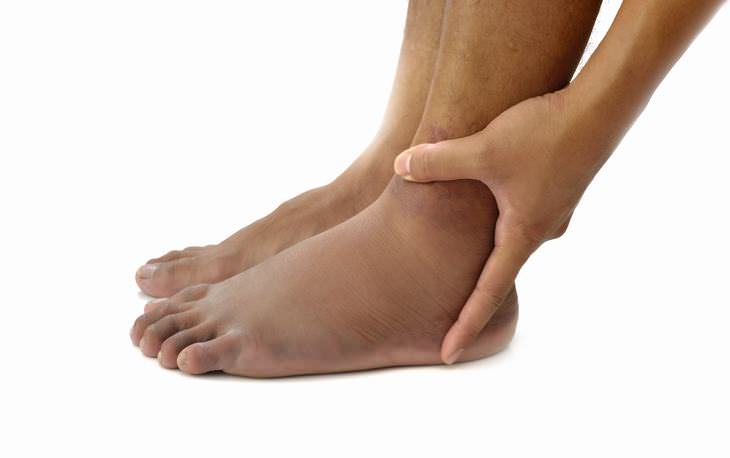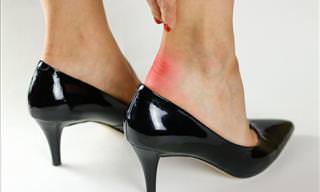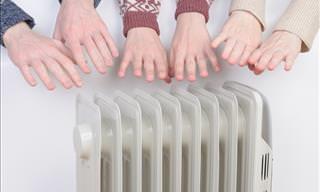
Why does swelling occur?
Swelling is caused by fluid buildup called edema. When it affects your arms, legs, hands and feet, it is referred to as peripheral edema. We retain water because blood vessels in our arms, legs, hands, and feet expand or dilate, which may be caused by hot or humid weather, or possibly, a number of other issues.
Dilation makes it easier for fluid to leak out of blood vessels into the surrounding tissue, causing the tissue to swell. Sitting or standing in one position for a long time without moving pulls the fluid down towards you hands, legs, and feet, making the swelling worse.
What remedies could relieve swollen limbs?
While the weather may be a contributing factor, the reason why some people swell cannot always be figured out. However, common disease-related causes of swelling are kidney or cardiovascular diseases. Very often, a doctor would prescribe a diuretic and would likely suggest that you cut back on salt.
Natural remedies to relieve swelling also include:

1. Wearing compression stockings
If you need to stand for a long time during the day, wear a support hose or compression knee-high stockings. This will help the blood circulation between your feet and your heart. Compression stockings come in many styles and colors, prices range from $10 to $100. They also range in sizes and pressures. So when buying compression stockings online, opt for a seller that will provide guidance on size and compression needs.
2. Keeping your legs elevated
Keeping your legs elevated while sitting for prolonged periods will help reduce the water retention in your body. Put a comfy, compact ottoman under your desk, or put your legs up and rest your feet on an extra chair. Propping your feet up on a few pillows while lying on the sofa or in bed will also help. Be sure not to endure the swelling. If this happens, it can cause your skin and tissue to stretch and change and may also lead to a more serious and lasting edema.
3. Taking walking breaks often
If you're unable to keep your legs elevated while sitting down, be sure to take frequent walking breaks. Aim to take short, five-minute walks every hour or so. This will increase the circulation and get your lymphatic system to pump out excess fluid.
4. Massaging your hands
If your hands appear to be swollen, enhance the circulation and lymphatic drainage by applying lotion to your hands and massaging them. Start with the fingertips then move down to the hand and the wrist. As another option, exercise your hands by holding them at chest level then clench and unclench your hands. To do this effectively, gently make a fist, then open your fist and spread your fingers. Do this several times a day.

When is edema dangerous?
There are instances when edema can be life-threatening. While cardiovascular and kidney disease may be a cause, other causes also include liver disease, sleep apnea, allergies, and also use of certain medications - including antidepressants, diabetes medications, and hormone replacement therapy.
Edema can become dangerous when it's not checked. Besides the serious aforementioned conditions, the swelling and stretching of the skin can cause a flaky, eczema-like appearance and even skin ulcers. Ulcers can lead to serious skin infections including cellulitis, where the infection bores through the skin into the underlying tissue.
Furthermore, chronic swollen legs and feet can put you at risk for blood clots that can lodge in a leg or travel up to the lungs, heart, brain or another part of the body. This is called thromboembolism (or stroke, if it reaches the brain).
Be on the look out for symptoms such as shortness of breath, rapid heartbeat or pain and heat in a limb. Should this be the case, get to a doctor immediately as you may be experiencing thromboembolism. Symptoms may also be accompanied by chest pain, fever, or intense anxiety.

What will happen if you suffer from chronic edema?
While you may get relief from the self-treatment methods described above, it may still be a good idea to get it checked out by a doctor. Your doctor might include other preventative measures, particularly if you suffer from severe chronic edema:
1. Prescribing pneumatic compression
If your swelling is severe, you may be instructed to use a pneumatic compression device - an inflatable garment resembling a boot, sock, or sleeve that does the work of a compression stocking with greater intensity.
2. Checking for clots
Your doctor may check for clots through an ultrasound in the swollen limbs. If this may be the case, they'll likely put you on a blood-thinning drug to prevent thromboembolism.
3. Recommending drug physiotherapy
Your doctor may refer you to a physiotherapist for massage and movement therapy as well as specialized compression techniques that involves the use of bandage wrappings.
 Go to BabaMail
Go to BabaMail




























